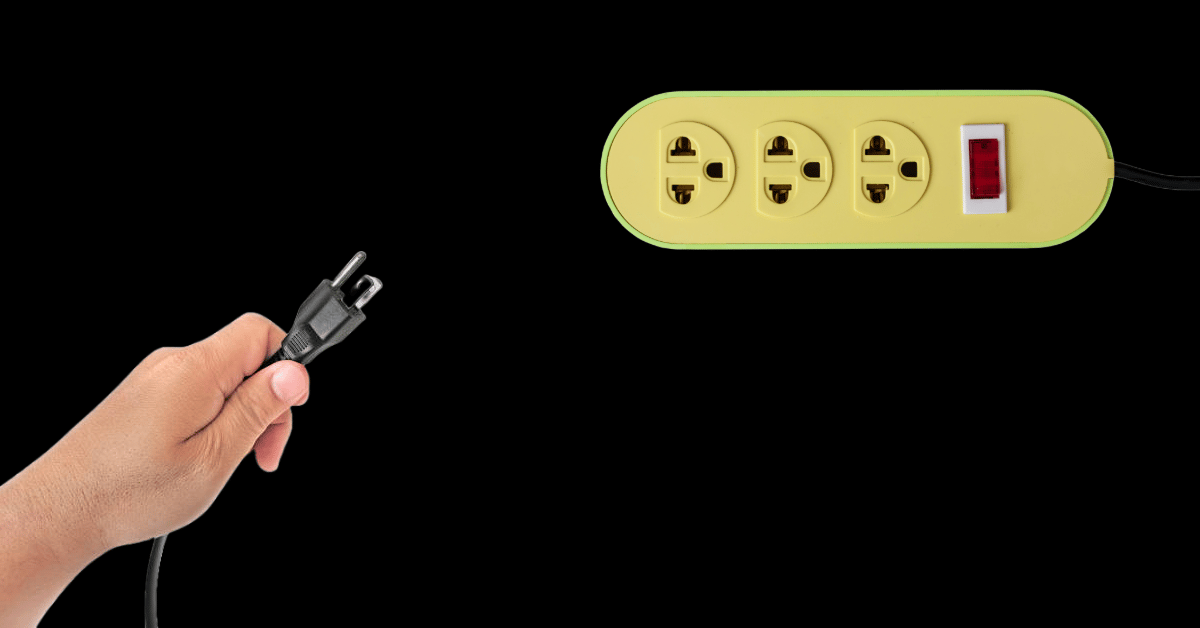
Time to lock in y’all. Seriously, I mean it.
If you’re like me, you talk about “locking in” in a near-ironic way, in that you mock meathead gym bros masking as life gurus while still getting serious about making things happen. But the winds of fate have changed, my friends, for the “locked in” approach has transmogrified into something beautiful: a mindset rooted in logging off and loving yourself. Suffice to say, we should all lock in a bit more these days.
- Devin Pike, Guest Editor 💜
PRESENTED BY THE ATTENTION SEEKER
0 —> 77K followers in 100 days? This could be you.
You’ve seen other businesses blow up online and thought:
“How the hell did they do that?”
You're not missing some secret magic formula. You’re just missing the right strategy. So let us help you build one (in just 1 day!).
At the Cohort Intensive, you’ll get:
✅ A full content strategy
✅ A repeatable system you can stick to
✅ A plan to grow your business through social
…all alongside the team with 3.2M+ followers & 100M monthly views.
We recently helped Tough Yarns with their social strategy. Three months later? They’ve got 77K+ followers across IG & TikTok.
Why shouldn’t your brand be next? 👇
24 Oct | Auckland | $3000 |12 spots
WHAT’S HAPPENING IN MARKETING TODAY?
Twitch puts on its e.l.f. face, Cybertruck drivers are self-victimising & Reddit’s AI prescribes heroin

Huge news for E girls: e.l.f. Cosmetics X Twitch
e.l.f. Cosmetics is officially speed-running the future of shopping. The brand just became the first to test Amazon Ads’ new livestream shopping format on Twitch, letting viewers buy products directly while watching a stream. The pilot kicks off on e.l.f.’s own channel e.l.f. YOU! with Amazon’s retail data quietly working in the background to match the right products to the right audiences in real time.
The goal, according to Marketing Dive, is to shorten the funnel from discovery to sale without disrupting the viewer experience. It’s a clever move that taps into Twitch’s community-driven energy while pushing U.S. consumers closer to the seamless “social commerce” model that’s already huge in Asia.
Marginalizing yourself by owning a Cybertruck??
Well, yeah, I guess intentionally buying one of the most hated vehicles in America and maybe even the world will do that to ya. It’s not about the truck itself, per se, but what the truck represents. Before mid-2024, they were just ugly trucks, and not political. Today, it’s a different story.
Wired spoke to seven owners of the Tesla Cybertruck about their controversial purchase and why they’re proud to drive it. Some said it’s "just a truck with no political affiliations”, others were at the Capitol on January 6… need I say more Almost all of them have been flipped off, screamed and even spat at. ‘Merica.
Reddit's AI suggests users try heroin
Add that to the concerningly long list of unhinged AI behaviour in a concerningly short amount of time. Kind of noticing a pattern here… anyone else….?
This time, Reddit Answers, the platform's conversational AI product, suggested users who are interested in pain management try heroin and kratom. This is another extreme example of dangerous advice provided by a chatbot, despite this one being trained on Reddit’s highly coveted trove of user-generated data. Bots will be bots, I guess.
-Sophie Randell, Writer
Hey, do you like YAP?
If so, why not share it with a friend? The more we grow this thing, the more resources we can put into making it awesome for you. Even if every subscriber invites just 1 person to YAP, we’ll meet our growth goal for 2025. So, you in?
DEEP DIVE
Everyone’s “locking in”, and maybe that’s a good thing

Ok I’m going to be honest here, at first, I thought “locking in” was just another dangly-earring-tiktok-gym-bro-turned-life-coach phrase.
The kind of thing shouted over a pre-workout shake while setting up a tripod to flex traps unnecessarily hard. But, and I don’t say this lightly, the hater in me has had a change of heart. I’m looking at it a little different. Because I’ve noticed these kids aren’t “locking in” to grind harder and burn out by age 23. They’re locking in to log off. Or, in other words, to lock out. And that’s a huge (pleasantly surprising) difference.
Because Gen Zers are literally disappearing from the internet to go Super Saiyan. To focus, to heal, to rebuild, and completely rebrand themselves. Sometimes you’ll catch a glimpse of it, like a ghost in the mist: a cryptic “See you on the other side” post before vanishing into silence. Months later they reappear with skin clearer, boundaries firmer, and vibes recalibrated. It’s the digital equivalent of a chrysalis, a self-imposed cocoon of discipline and do-not-disturb. And it might be the healthiest trend I’ve seen come out of the internet thus far.
It’s like the new cool is being boring, but in a good way.
There was a time when being chronically online was a personality. Now it’s a diagnosis, and believe me, it’s one you don’t want. Gen Z has spent their formative years swimming in algorithmic sludge, imposed mostly by millennials: hustle culture, doomscrolling, and micro-trends that expire faster than avocados. So, it makes sense that “locking in” has now become aspirational. It’s not about working more, but focusing better. A rebellion in a world addicted to noise. Locking in is the new party. Deep work is the new night out. Being unreachable is the new flex. And I’m so here for that.
It’s easy to mistake this as just a rebrand of hustle culture, the same productivity porn wrapped in slightly younger, more “fresh” energy. But to me, the “lock in” era feels spiritually different. Because it’s not a rebrand of “rise and grind”, it’s an extension of digital minimalism. Instead of chasing success for clout, people are chasing clarity. Instead of glorifying busyness and burnout, they’re glorifying boredom, the rarest commodity of all. Deleting social apps, setting screen limits, reading actual books. The same generation that invented “delulu” as a lifestyle now wants to reclaim their attention spans.
It’s like watching a cultural pendulum swing mid-air, from overstimulation to self-discipline - from always on to off.
Millennials had “digital detoxes”. Gen Z has “lock-in season”. One sounds like a wellness retreat, the other sounds like a boss fight. The tone isn’t at all gentle, it’s militant self-improvement. “I’m disappearing for six months to work on myself with no exceptions or excuses” has replaced “new phone, who dis”. There’s a strange performative purity to it. You announce your withdrawal from the noise, but you still need to post about it first, because that’s how we mark transformation now, duh.
But I don’t feel like that contradiction makes it at all fake. It makes it very human. The desire to both escape and be witnessed while doing it, it’s the modern paradox. It’s also somewhat of a silent social contract. By posting about it, by letting your peers and the world know you’re serious, reinforces the idea that you must commit. It keeps you accountable by proxy.
At its core, “locking in” is a symptom of collective cognitive fatigue.
We’ve hit the point where our brains are fkn begging for a breather. I’ve said before, focus is the new rebellion, and attention is absolutely the new luxury. The “lock-in” trend shows that people aren’t rejecting technology, they’re rejecting noise. They want to use the internet with intention again. Where “quiet luxury” made restraint fashionable in fashion, “lock-in culture" is making restraint fashionable in behavior. Gen Z realises we can’t just be brainless, dopamine-addicted consumption monsters.
Where previously there was no levels of control in place, the cohort have slammed on the breaks. We’re seeing the rise of a new social archetype: the intentional loner. Offline, disciplined, slightly mysterious, probably journaling or mastering the muscle up. The anti-influencer who inspires by absence.
There’s irony, but there’s also hope.
Yes, it’s funny that people have to post about disappearing. But the fact that we’re even glorifying focus again feels like a small cultural miracle. The pendulum is swinging away from chaos content and toward clarity. It might’ve started as gym-bro slang, but it’s evolved into a shared language for reclaiming time, energy, and self-respect.
So, if your feed goes quiet, don’t panic. They’re not gone. They’re locked TF in - maybe you should follow suit?
-Sophie Randell, Writer
TREND PLUG
"When I walk into a haunted house..."

This trend is basically if therapy had a Halloween special.
The sound comes from Bella Kay’s heartbreak ballad "The Sick": it’s soft, emotional, and for some reason everyone decided to use it to… be funny?
Paired with the song, users are filming themselves and adding onscreen text along the lines of:
“When I walk into a haunted house and instead of ghosts and zombies I see…”
Then, they fill the blank with with whatever actually terrifies them in real life.
Everyone’s turning their most oddly specific core memories into a mini horror movie. Because at this point, we’re not scared of ghosts. We’re scared of that one Slack ping that says “can you hop on a quick call?” or the moment your boss starts a sentence with “so I’ve been thinking…” Some funny examples include:
How you can jump on this trend:
Using the sound, film yourself looking terrified and add your onscreen text:
“When I walk into a haunted house and instead of ghosts and zombies I see [your biggest fear]”
A few ideas to get you started:
"When I walk into a haunted house and instead of ghosts and zombies I see the client feedback doc"
"When I go to a haunted house and instead of seeing clowns I see 'can we hop on a quick call?'”
"When I go to a haunted house and instead of zombies I see the google drive folder called 'final_final_v9'"
- abdel khalil, brand & marketing executive
FOR THE GROUP CHAT
😂Yap’s funniest home videos: Pretending to take a bite out of our dog
❤How wholesome: Slinky Toy Story costume
😊Soooo satisfying: Bricks lined up like dominos? Visual and aural bliss.
🍝What you should make for dinner tonight: Hella cheesy Greek pastitso
ASK THE EDITOR

I know you guys always write about the importance of storytelling, but how does that apply to making educational content? -Oskar
Hey Oskar!
Think about it--one of the best ways to teach something is by telling a story. Humans are wired to learn through stories. It's the best way to convey information to people (and have them actually retain it!)
So depending on your brand, you could create educational content by telling the stories of your clients/customers (case studies) or using analogies to explain complicated concepts. It's all about applying a story structure to whatever kind of content you create!
- Charlotte Ellis, Editor ♡
Not going viral yet?
We get it. Creating content that does numbers is harder than it looks. But doing those big numbers is the fastest way to grow your brand. So if you’re tired of throwing sh*t at the wall and seeing what sticks, you’re in luck. Because making our clients go viral is kinda what we do every single day.
